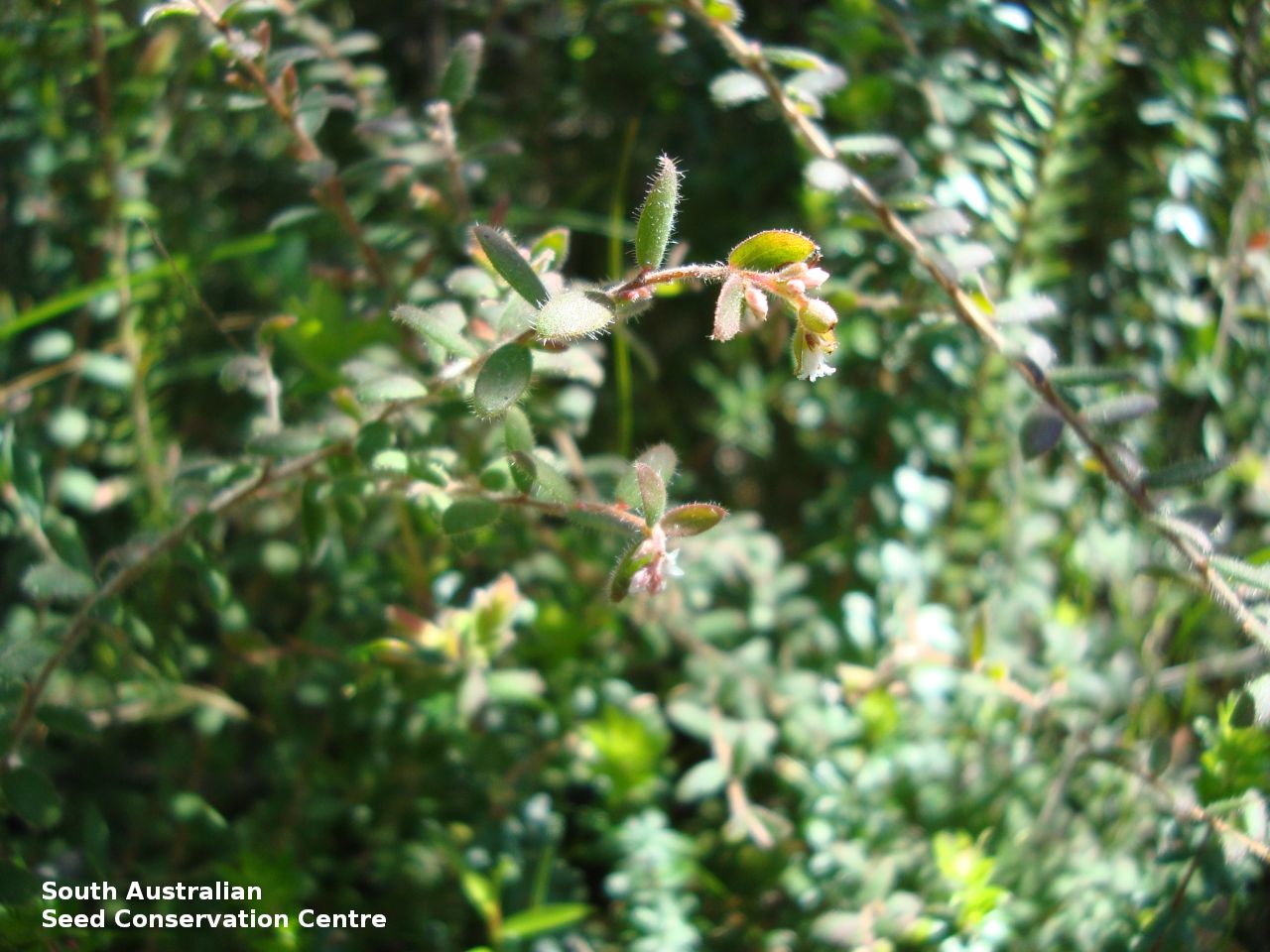
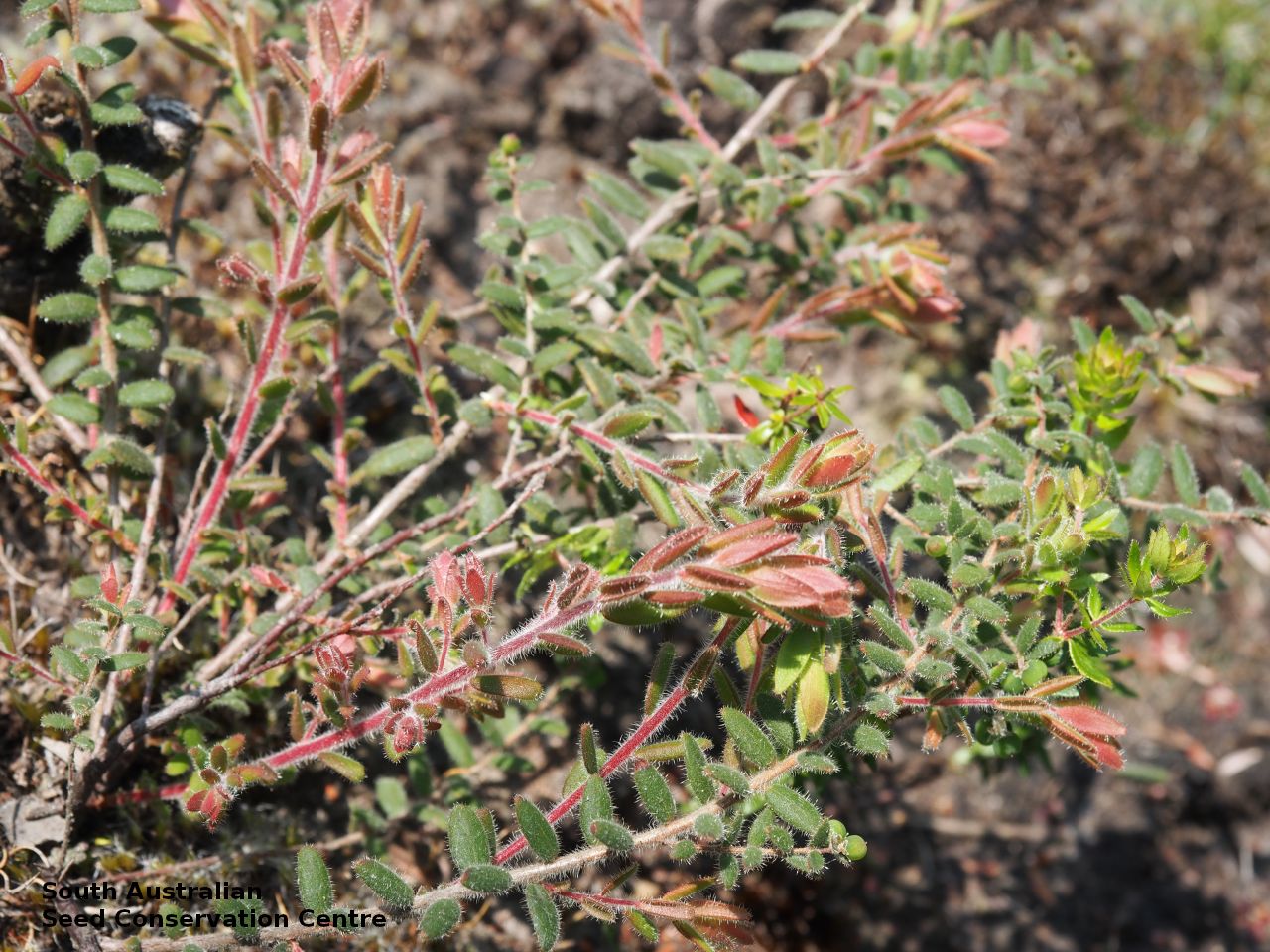
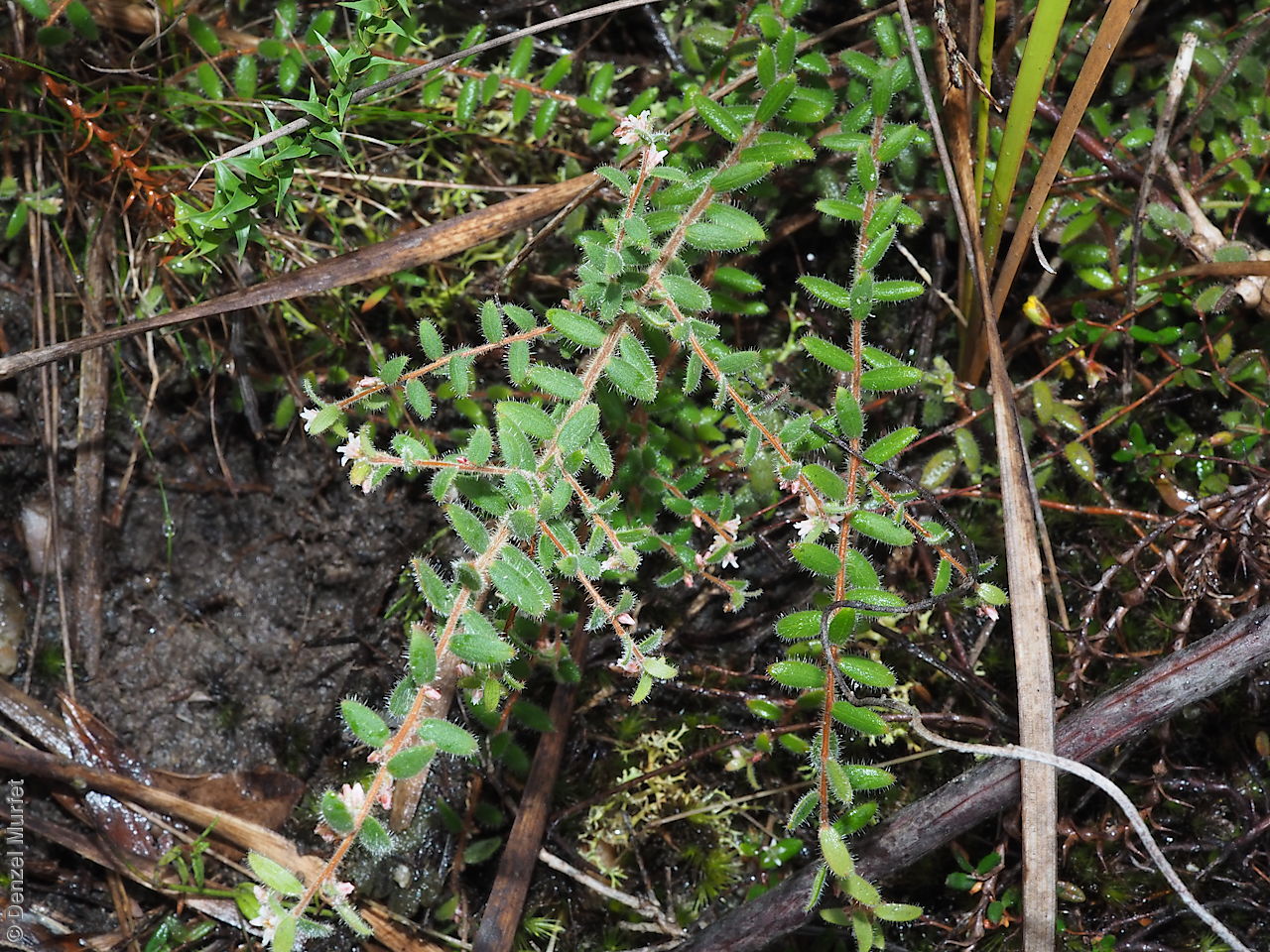
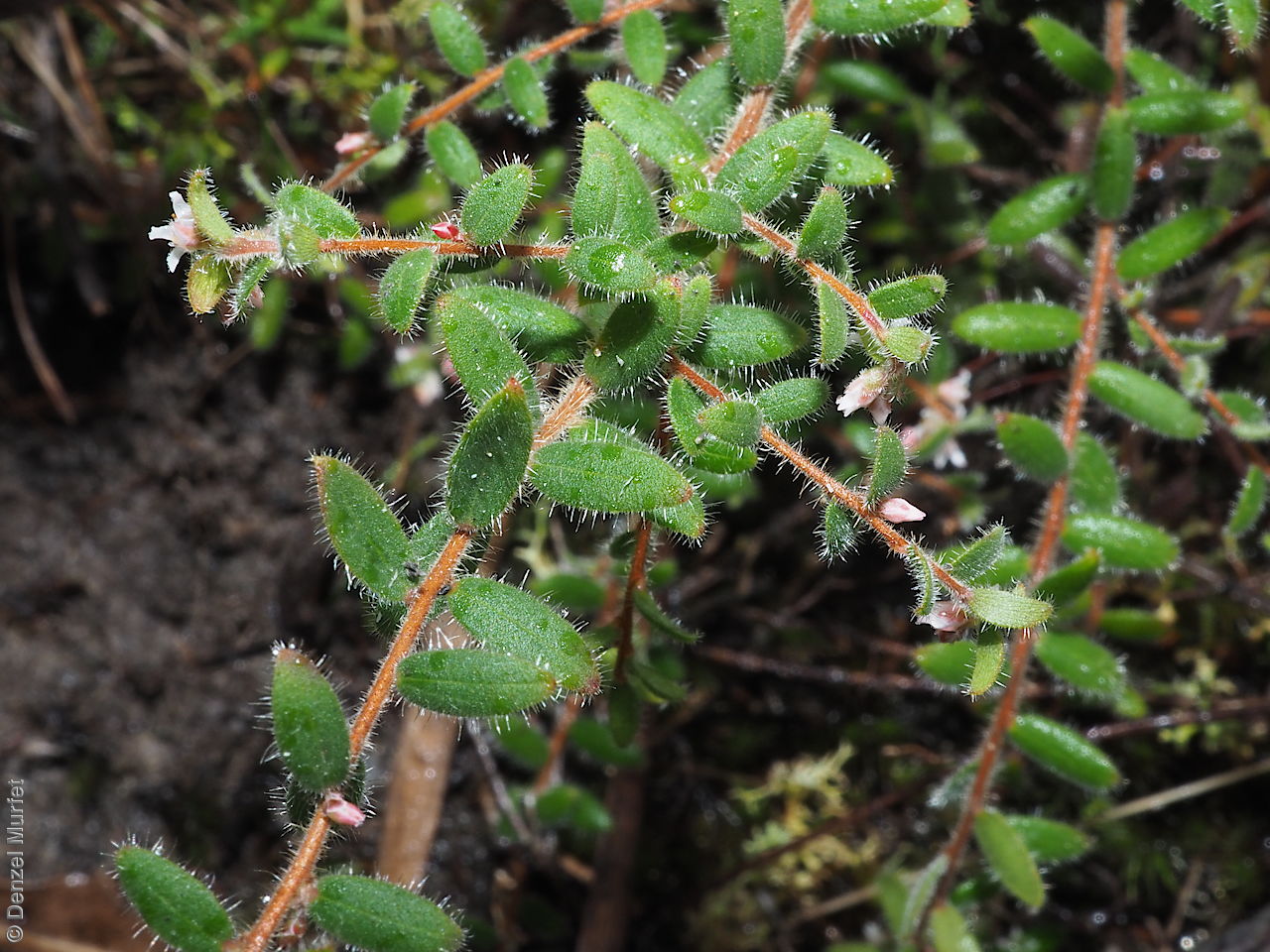
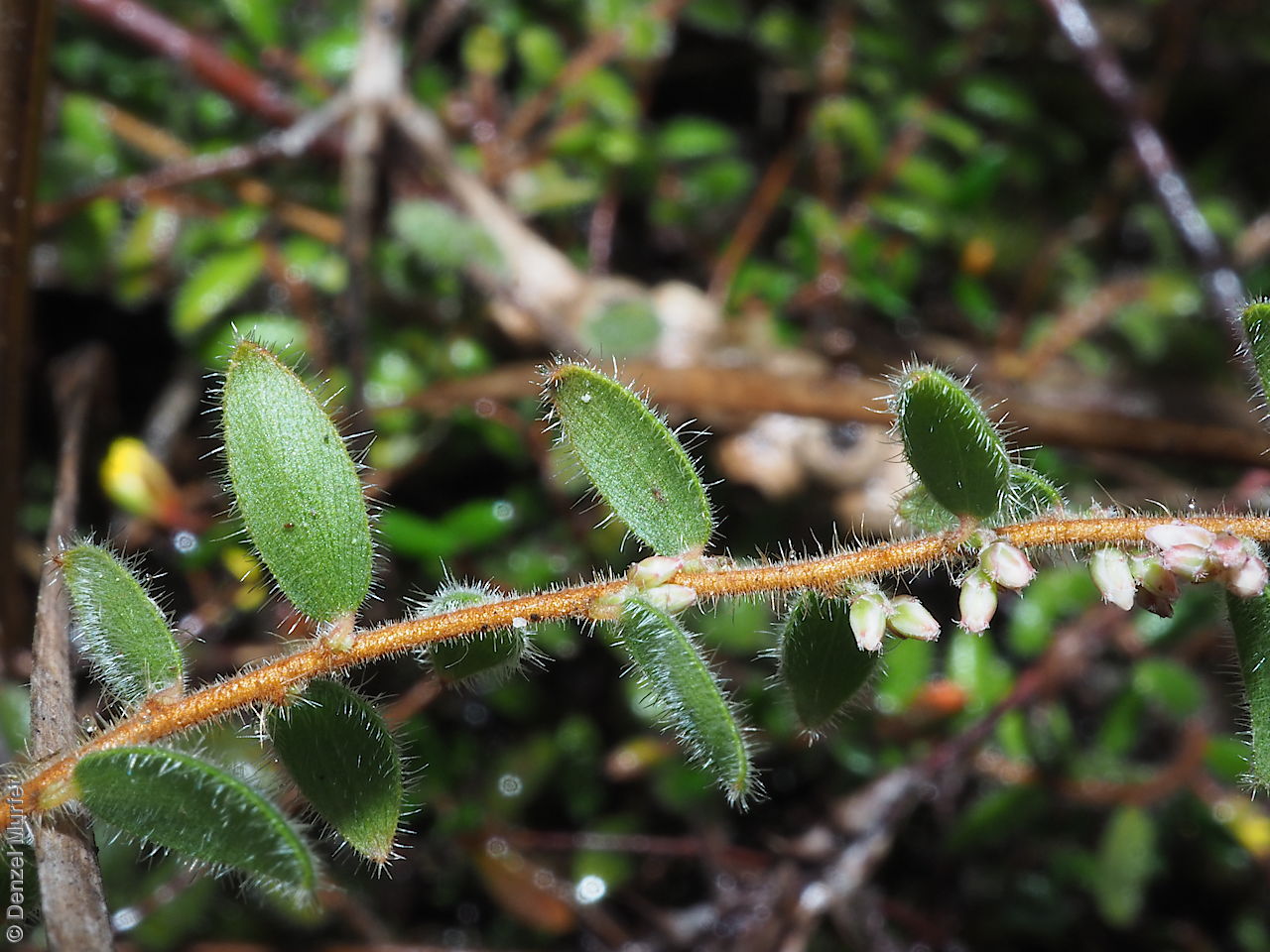
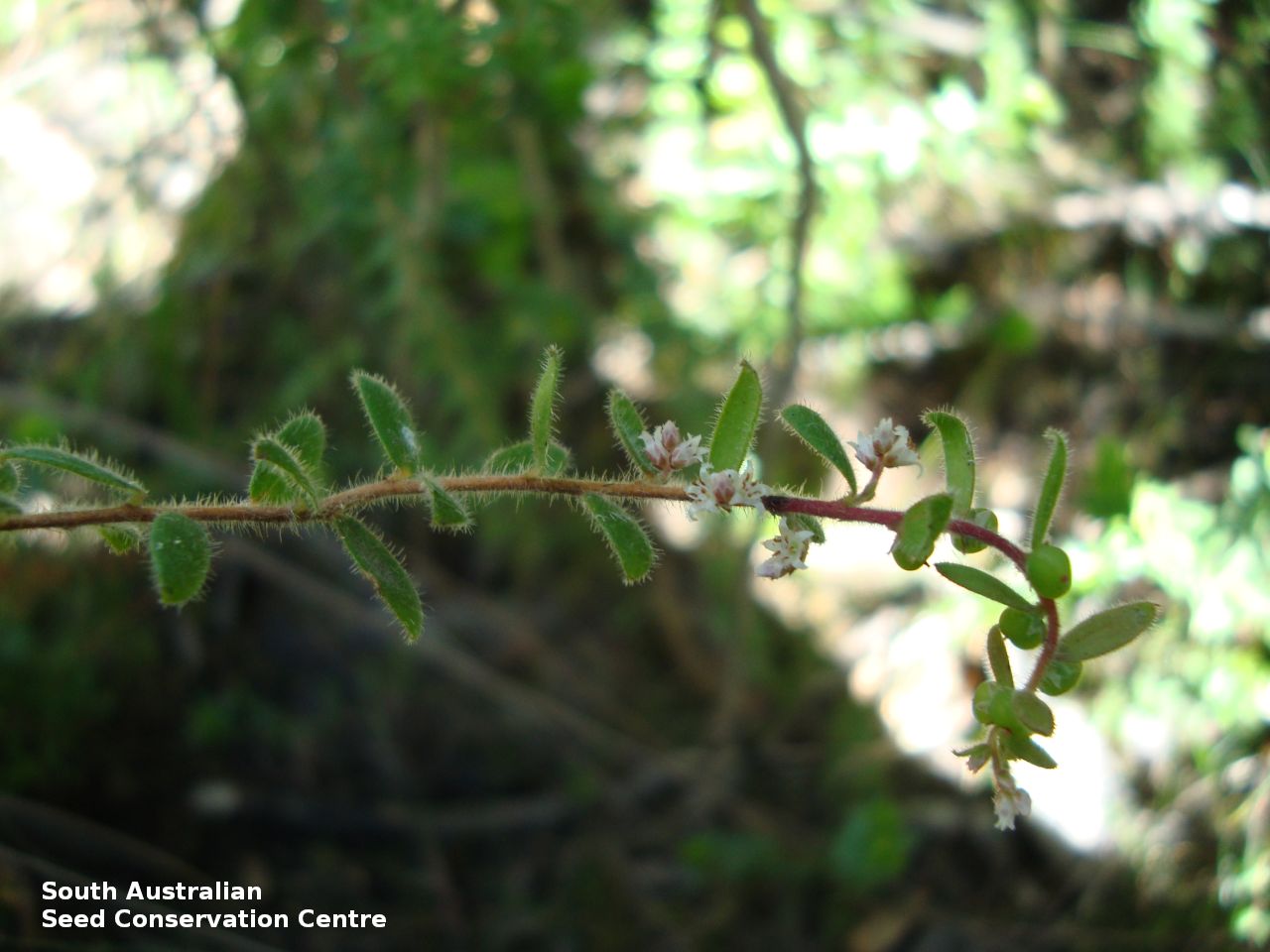
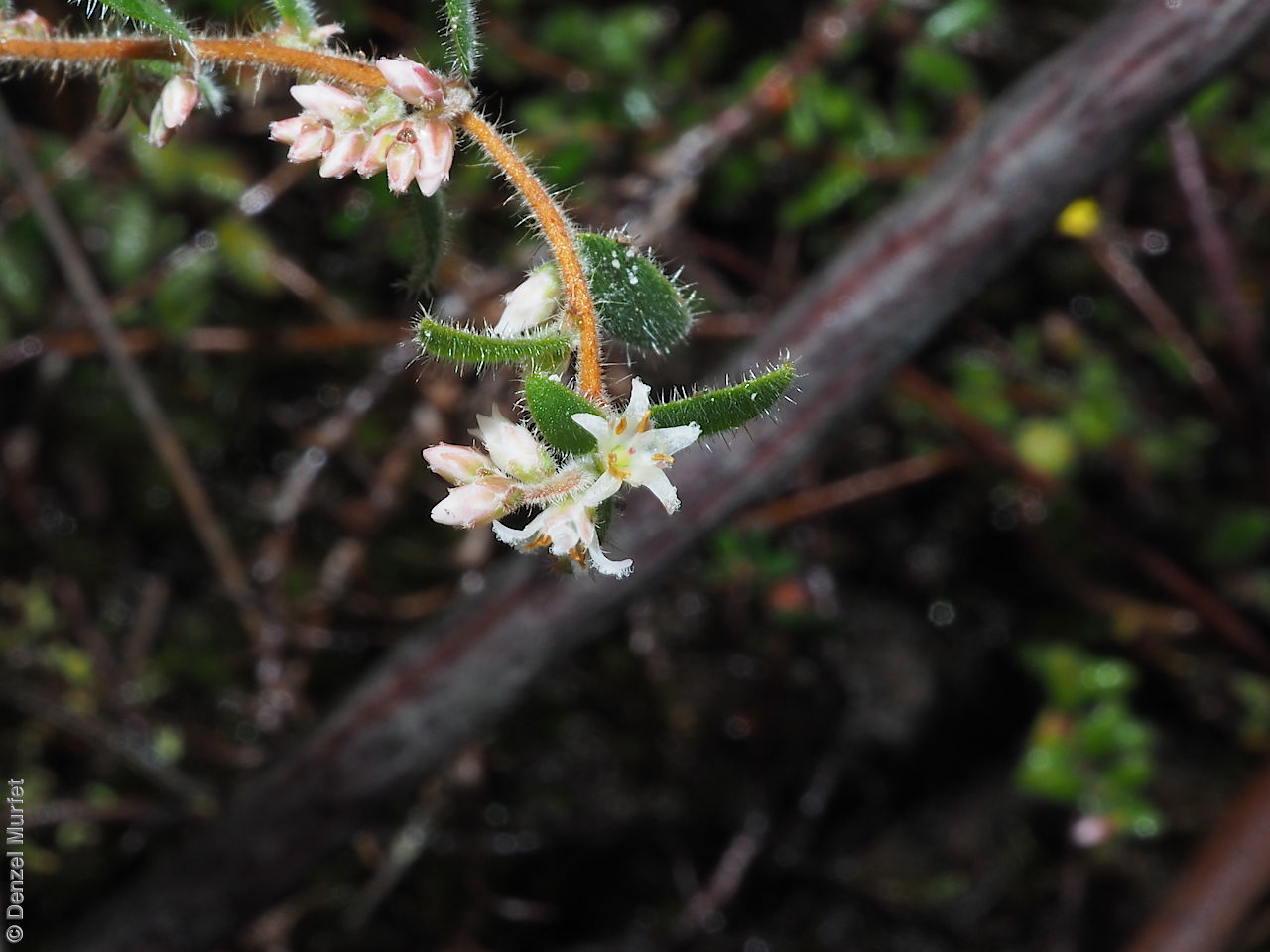
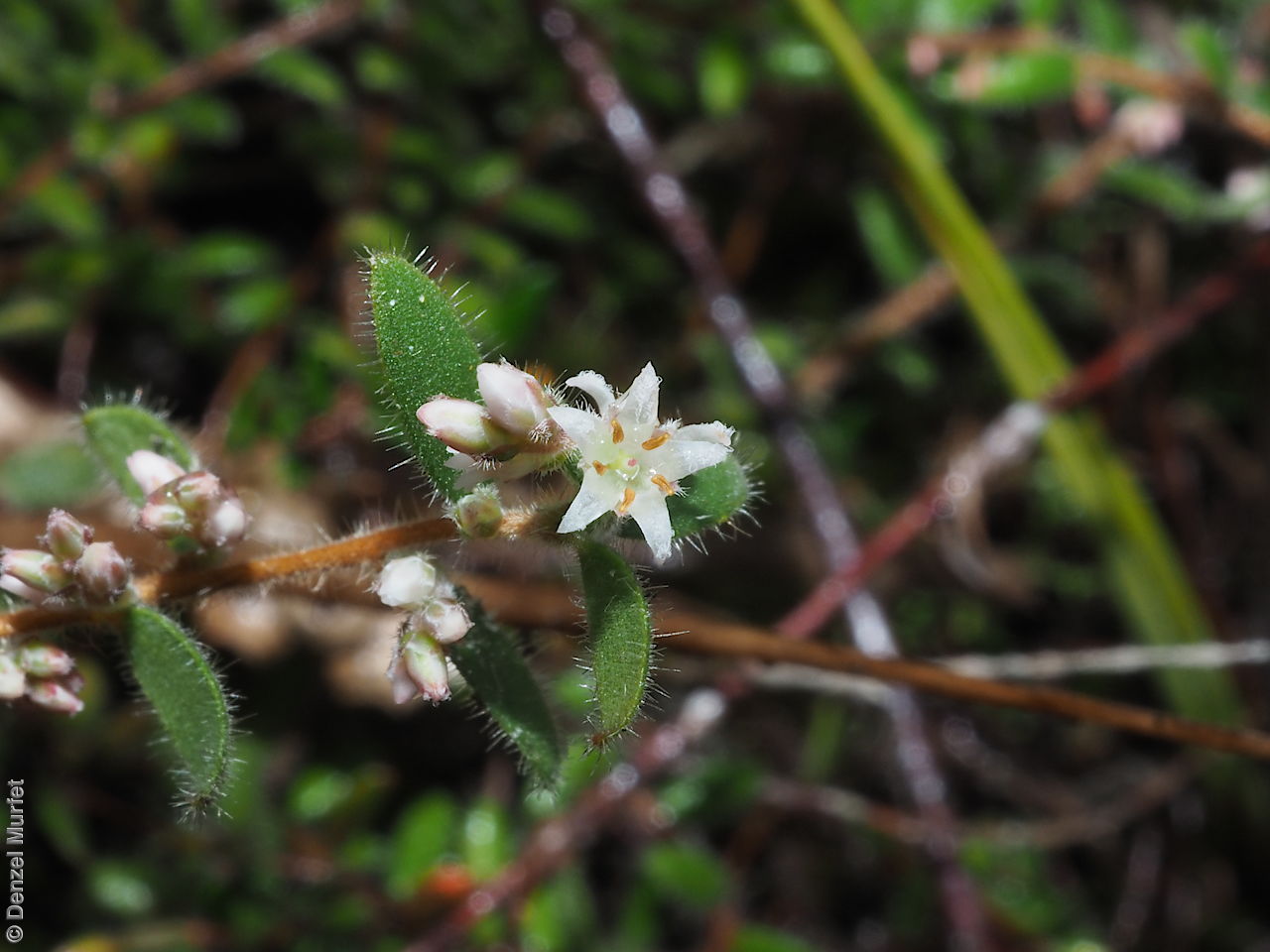
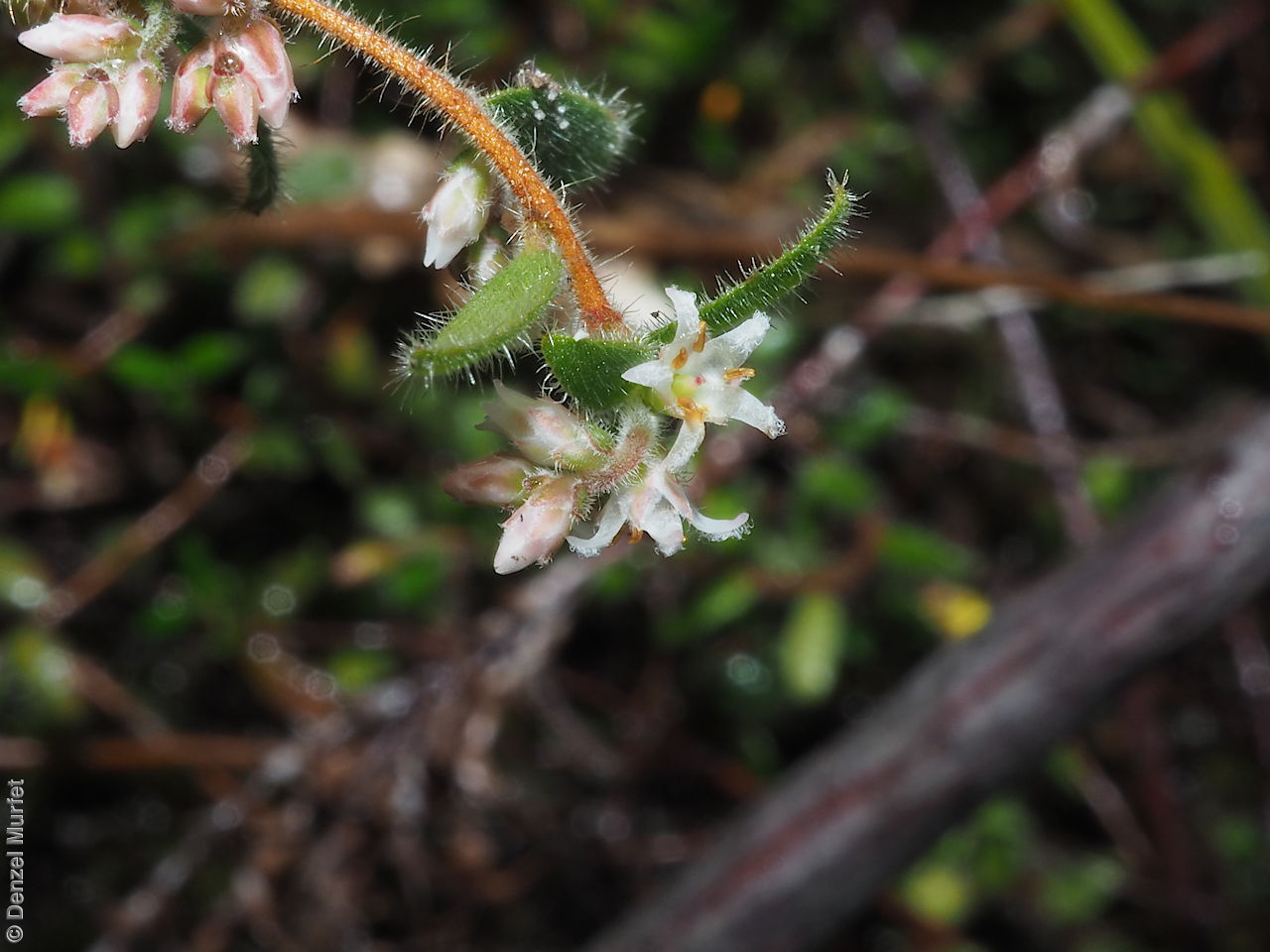
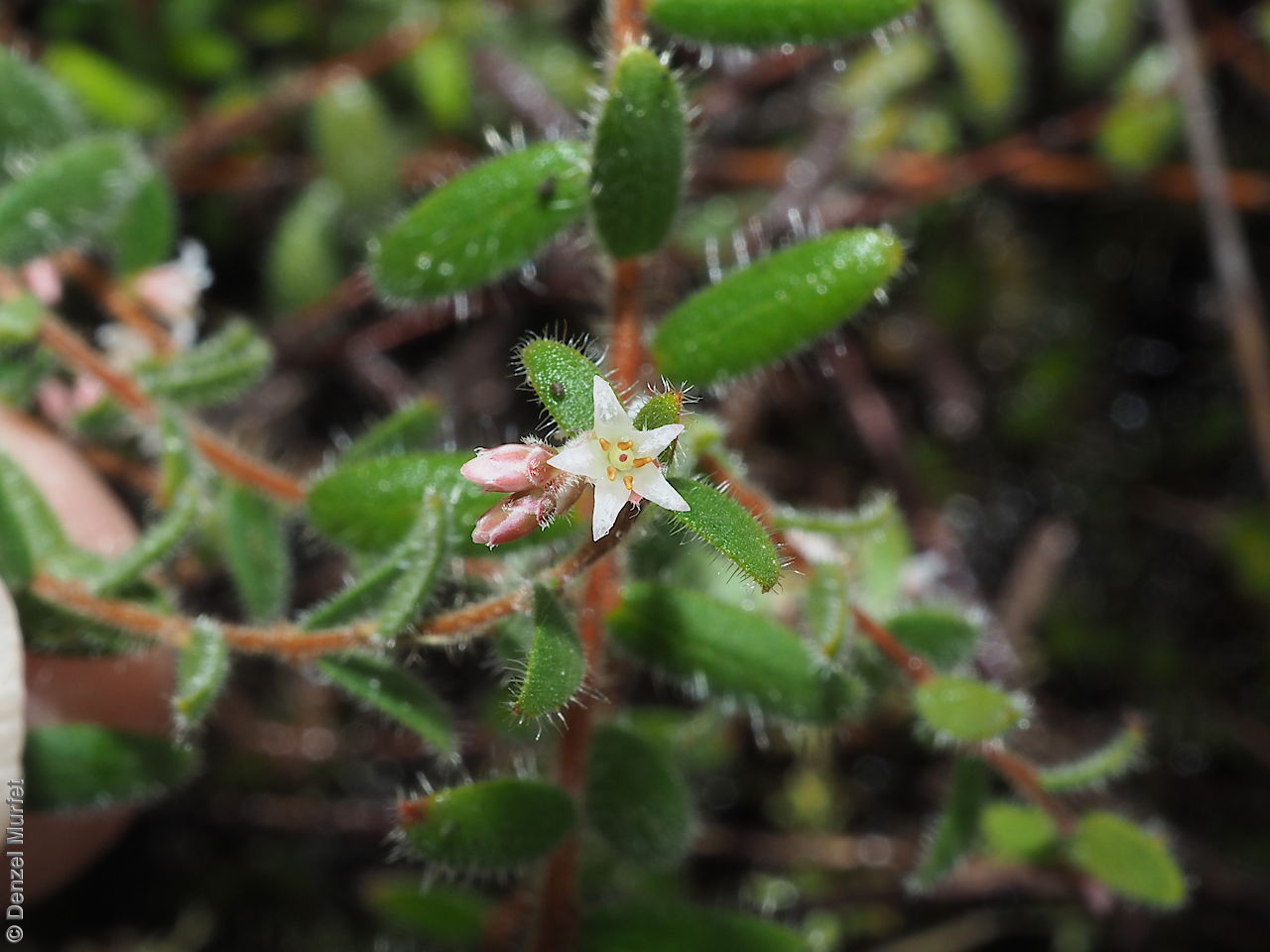
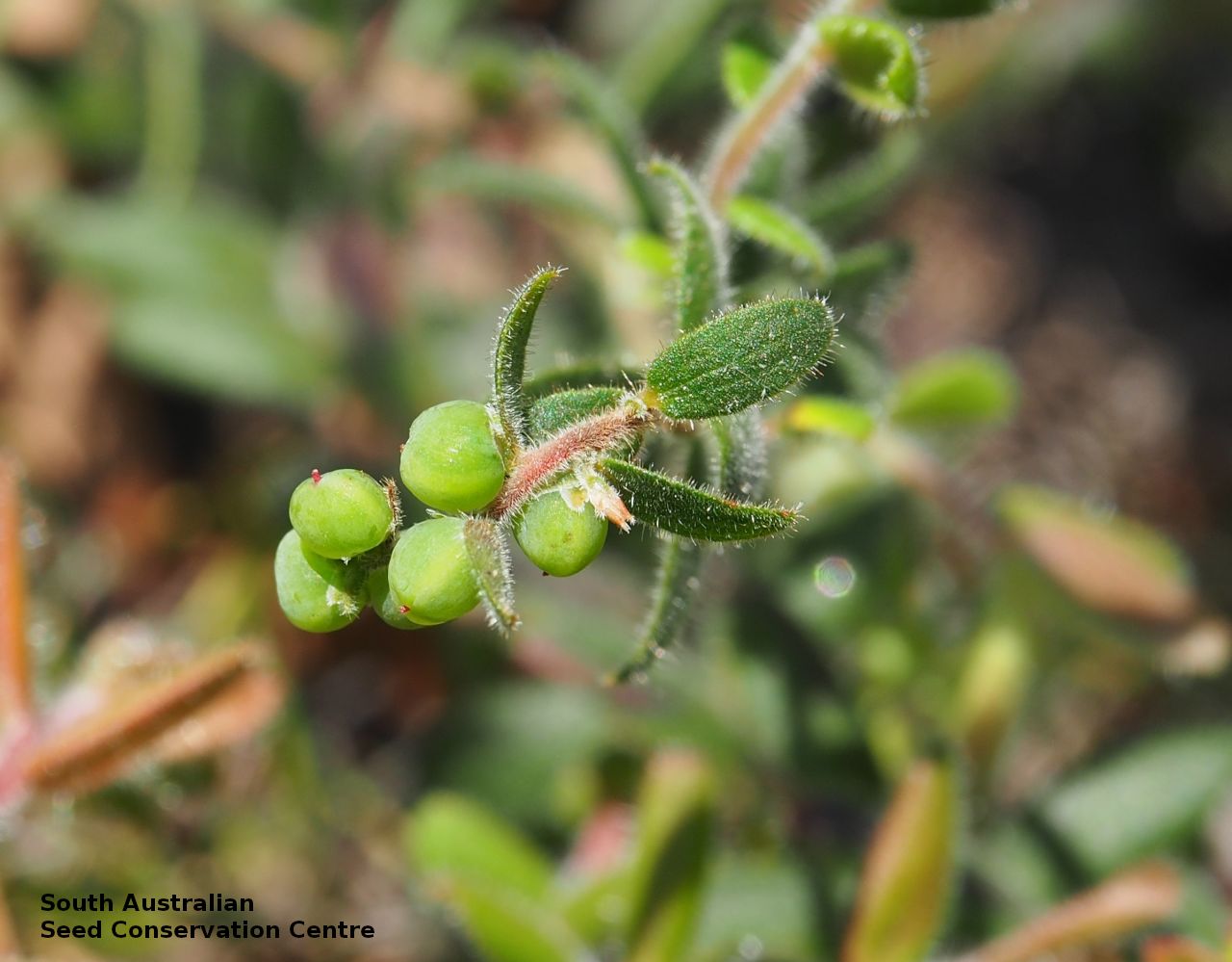
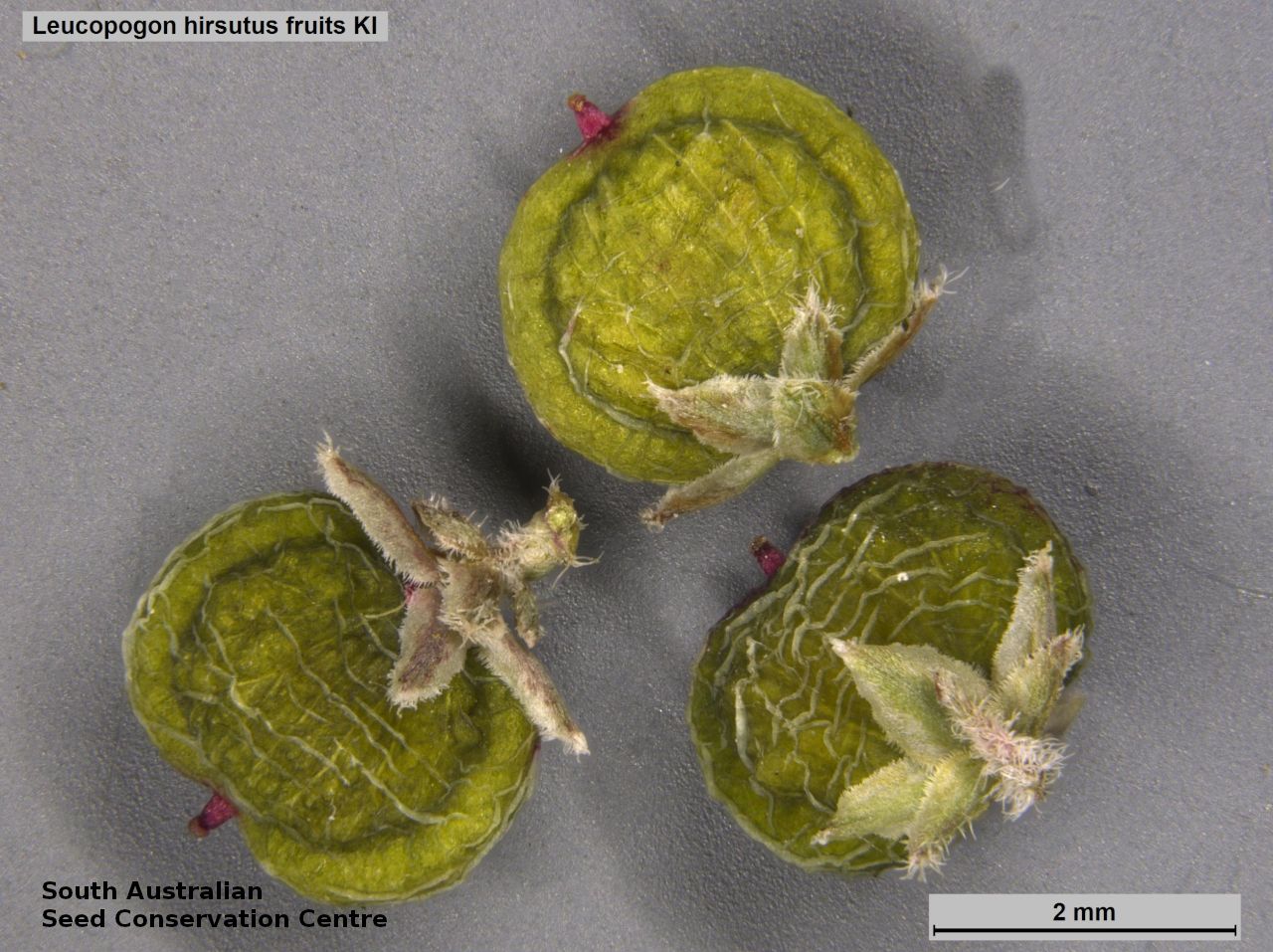
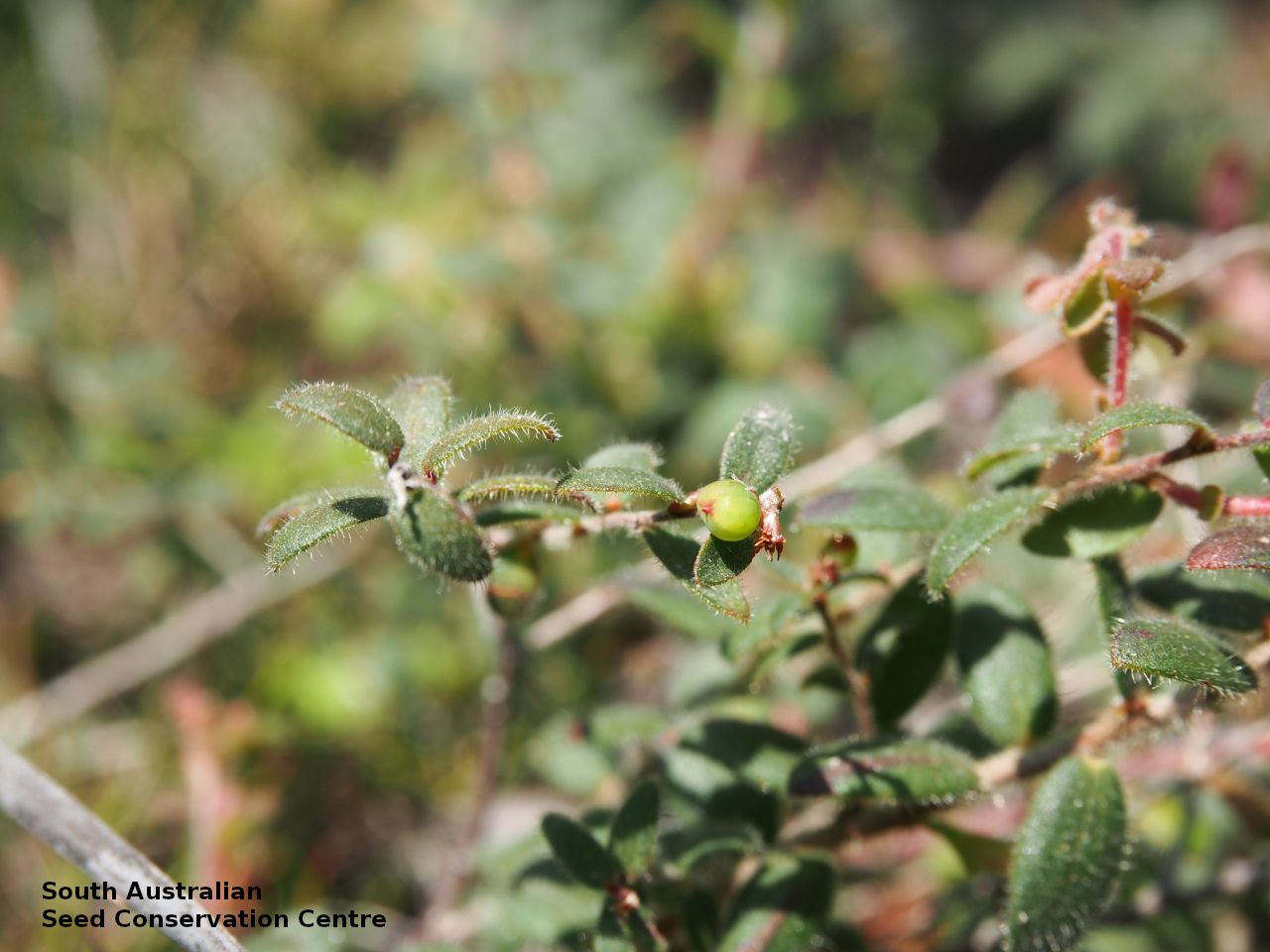
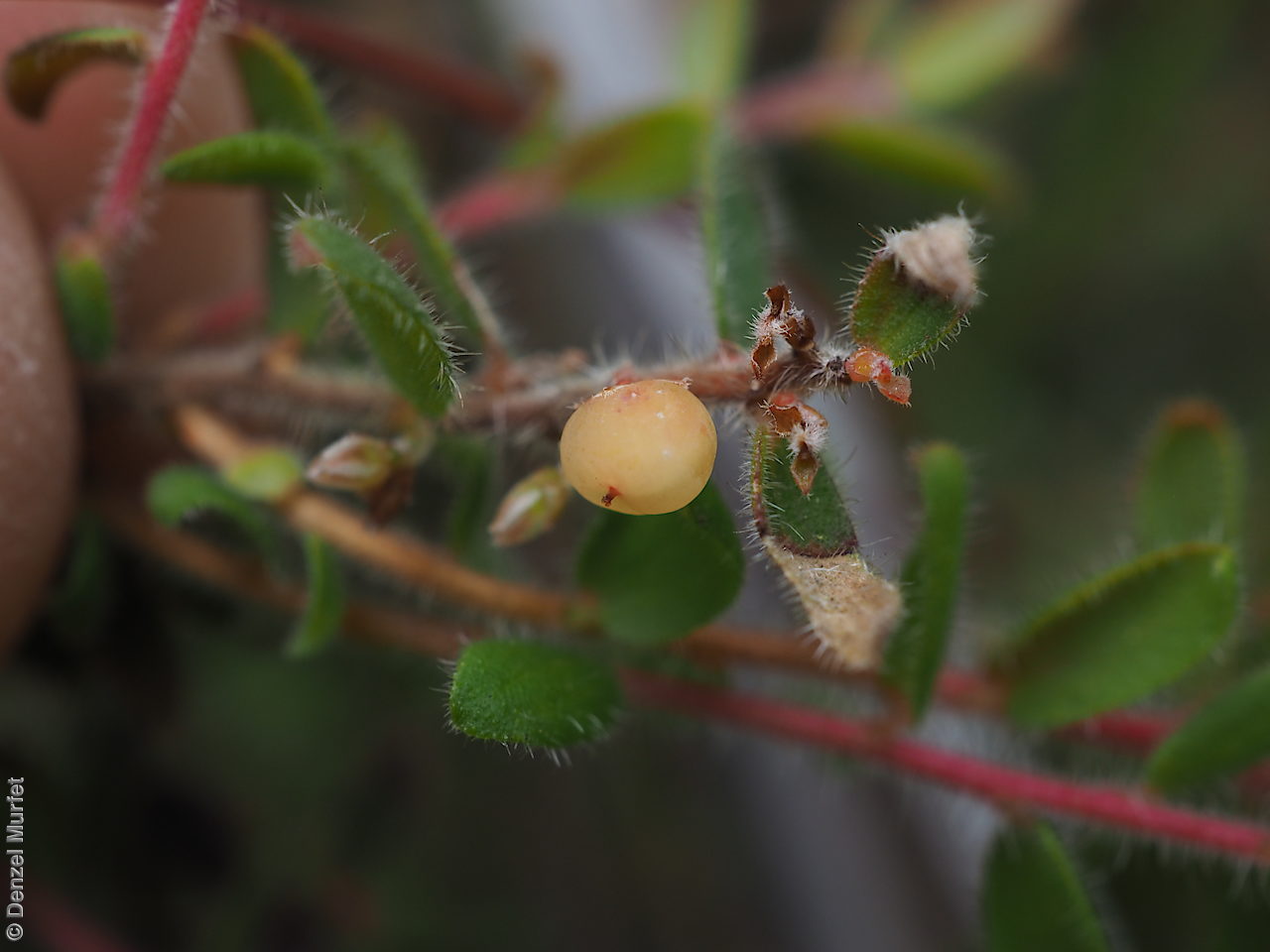
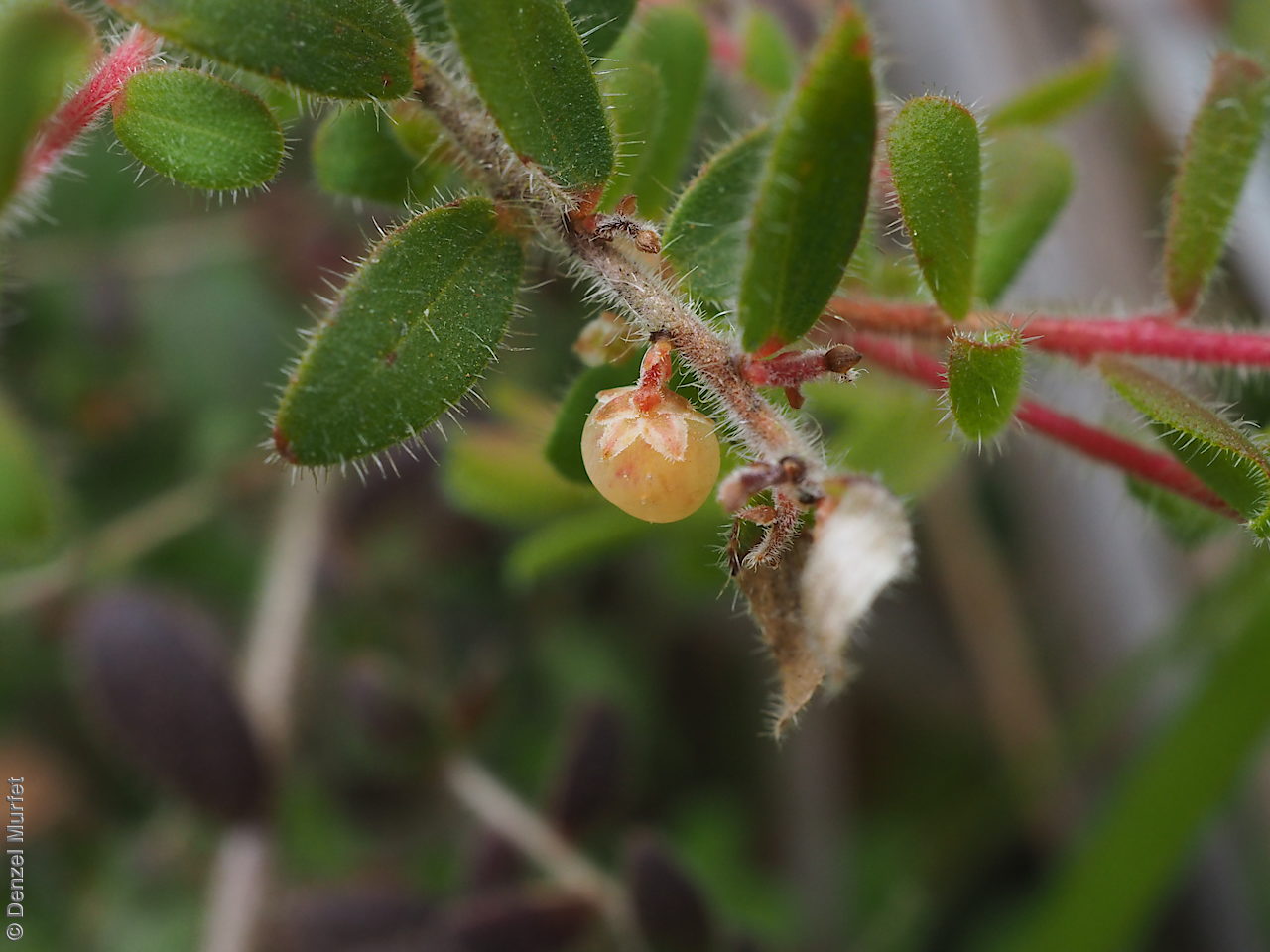
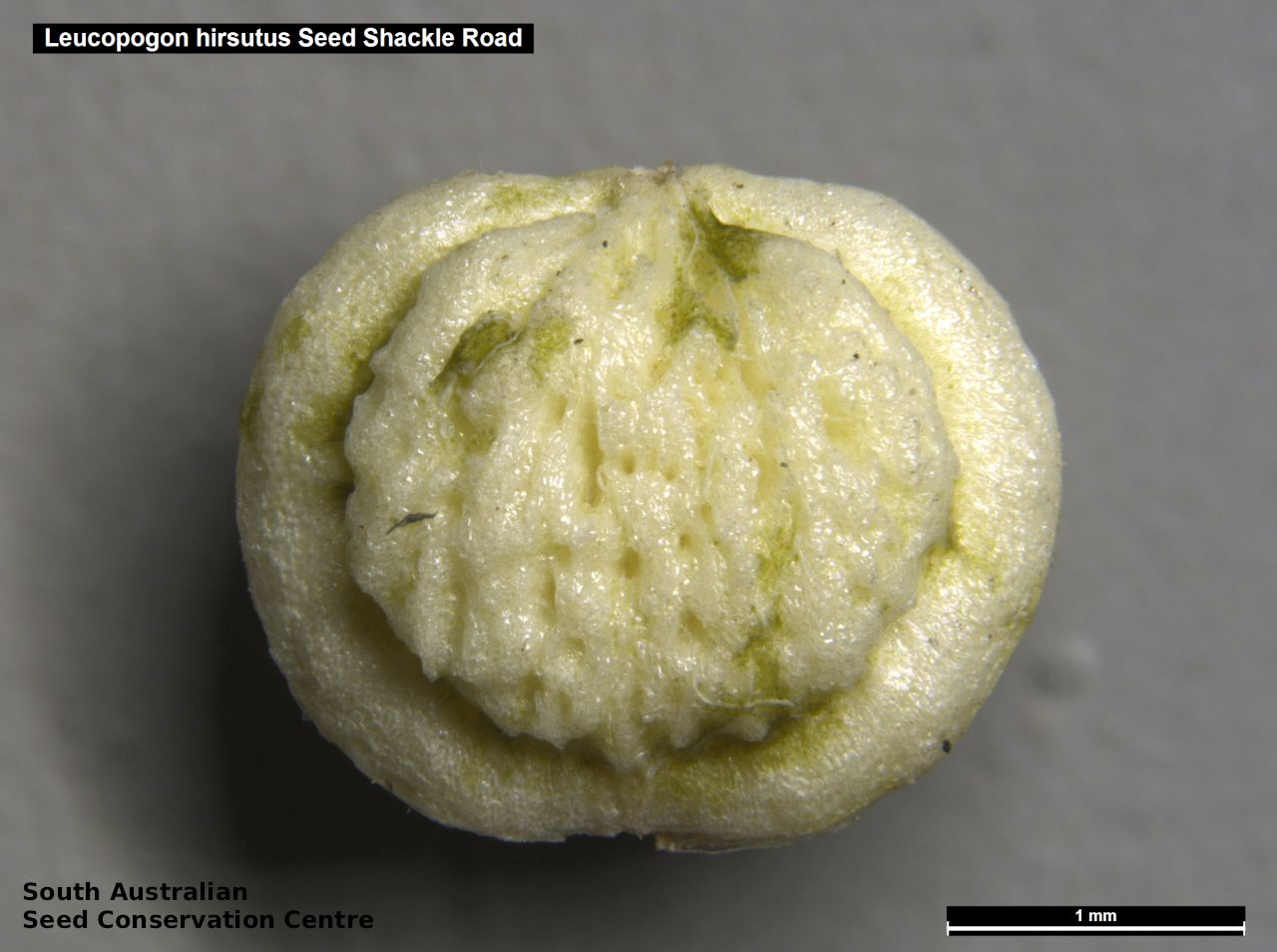
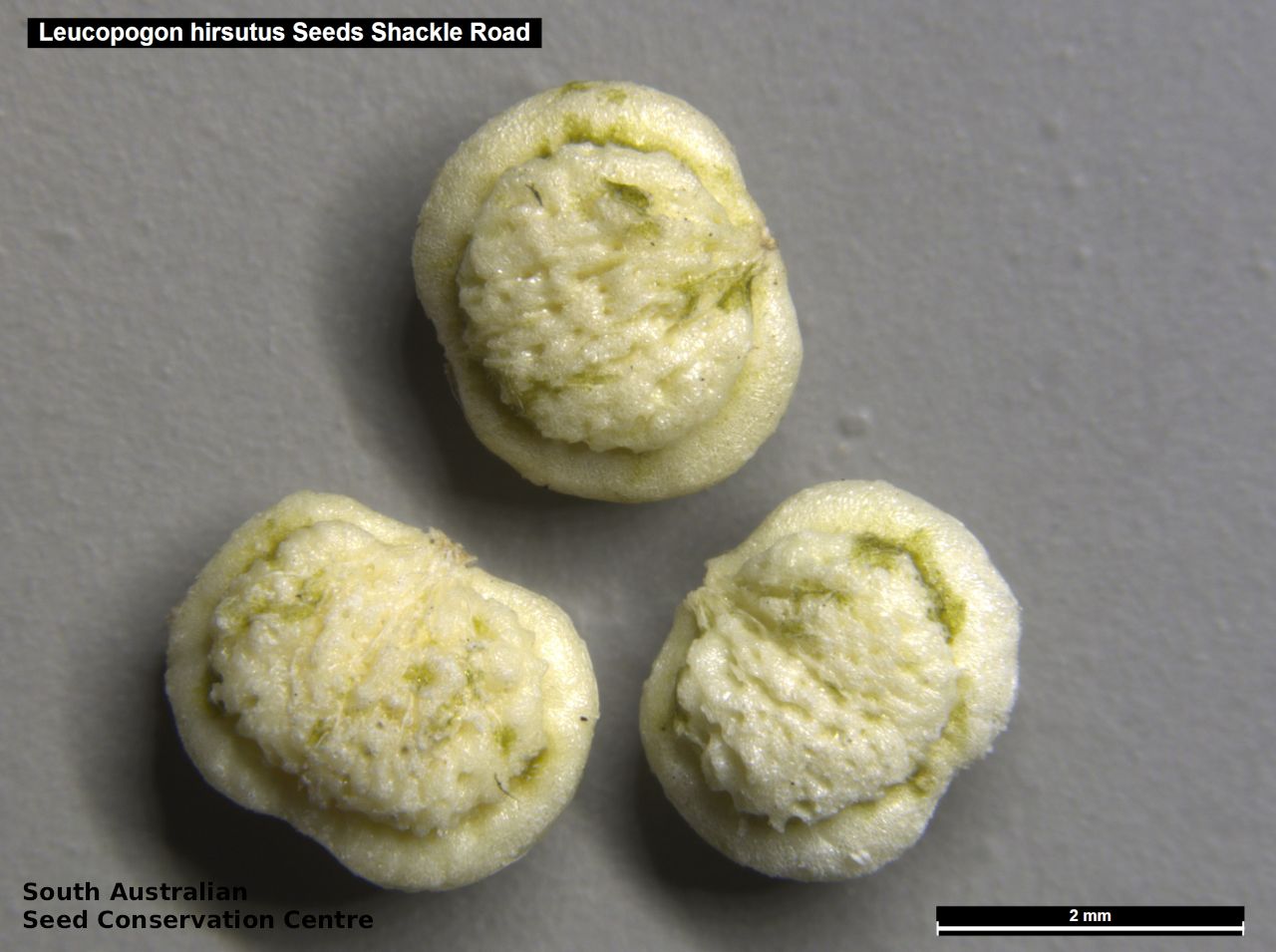

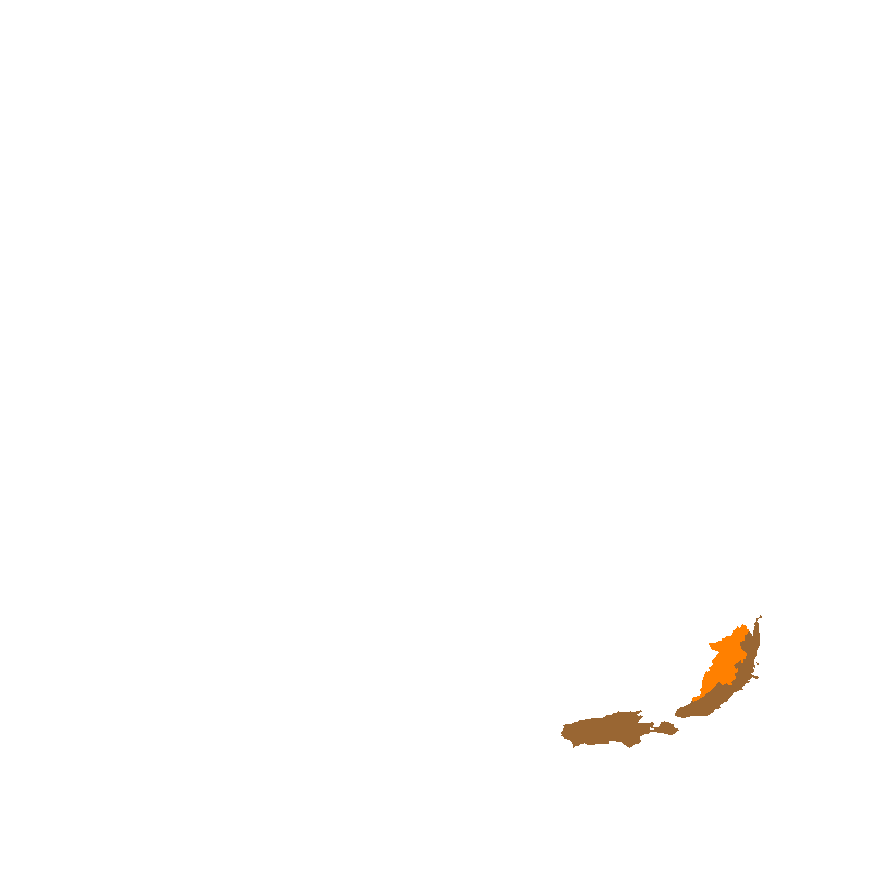
Botanical art
Prior names
Styphelia hirsuta
Etymology
Leucopogon, from the Greek 'leukoni', meaning white and 'pogon', meaning beard, alluding to the white-bearded corolla lobes. Hirsutus ,from Latin meaning hairy, referring to the species being covered in rough, short stiff hairs
Distribution and status
Found on Kangaroo Island ad the southern Mount Lofty Ranges in South Australia,growing on margins of edge of creeks and swampy areas. Also found in Western Australia. Native. Rare in South Australia. Uncommon in Western Australia.
Herbarium regions: Southern Lofty, Kangaroo Island
NRM regions: Adelaide and Mount Lofty Ranges, Kangaroo Island
AVH map: SA distribution map (external link)
Plant description
Diffuse shrub with intertwining branches to 100 cm long, with hairy branches. Leaves spreading to reflexed; elliptic to oblong, to 9.5 mm long and 3.9 mm wide; apex obtuse with a stiff tip, often recurved; margin sometimes recurved, hispid; lamina thin, flat to convex with hairy surfaces. Inflorescence in drooping terminal and upper axillary solitary spikes to 7 mm long, with 2-6 white (pink in bud) flowers. Flowering between August and October. Fruits are slightly flattened globular fruit to 2.5 mm long and 5 mm wide; smooth with soft woody endocarp containing 4 to 5 locules that may be filled with seed. Seeds are soft, white longitudinal seed within a woody endocarp to 2 mm long and 3 mm wide. Seed embryo type is linear, under-developed.
Seed collection and propagation
Collect seeds between November and December. Collect fruits by hand when ripe, soft and turning yellow. Check to see if locules are filled with seed. Place the berries in a bucket of water and leave to soak over night. Rub the flesh off by hand. Drain and wash again if required to remove all the fleshy parts. Then spread the wet seeds onto paper towels and leave to dry. Store the seeds with a desiccant such as dried silica beads or dry rice, in an air tight container in a cool and dry place. Seeds have morpho-physiological dormancy and will not germinate readily without treatment. Germination is enhanced by treating with fire cues, heat and smoke water, and gibberellic acid.
| Location | No. of seeds (weight grams) | Number of plants | Date collected | Collection number Collection location | Date stored | % Viability | Storage temperature |
|---|---|---|---|---|---|---|---|
| BGA MSB | 1,000 (2.12 g) 1,000 (2.12 g) | 14-Nov-2006 | DJD667 Kangaroo Island | 1-Aug-2007 | 45% | +5°C, -18°C |
Number of plants: This is the number of plants from which the seeds were collected.
Collection location: The Herbarium of South Australia's region name.
% Viability: Percentage of filled healthy seeds determined by a cut test or x-ray.